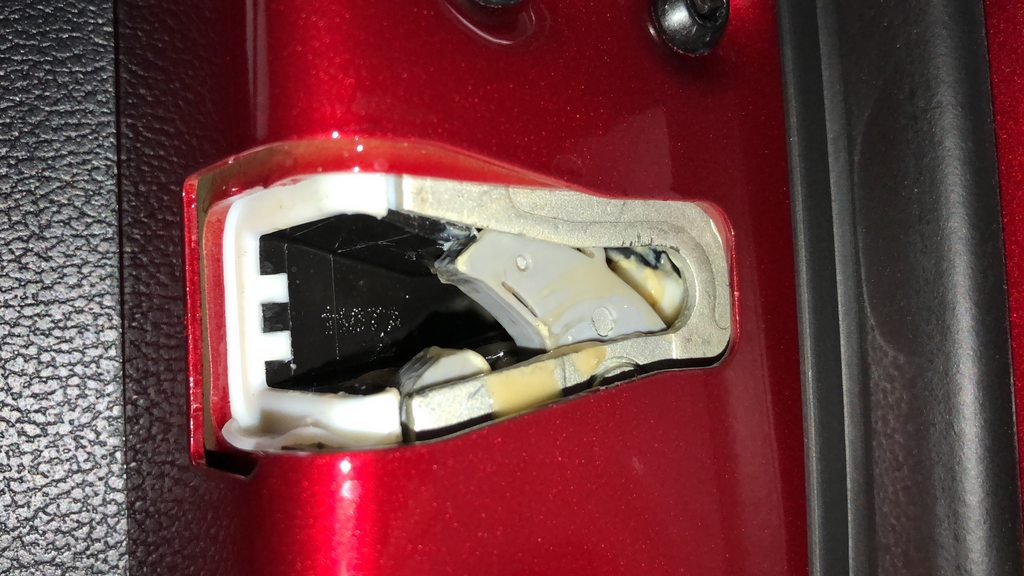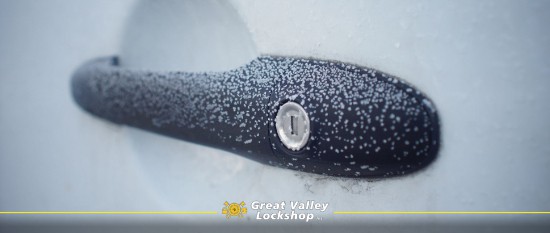How to Fix Frozen Door Latch
To fix a frozen door latch, use a lubricant and warm water to thaw it. Clean and dry the latch before lubricating it.
Dealing with a frozen door latch can be a frustrating and inconvenient situation. It can happen due to freezing temperatures or a lack of proper maintenance. However, with some simple steps, you can resolve this issue quickly and efficiently. By following the right techniques, you can ensure that your door latch functions smoothly and prevents future problems.
We will discuss effective methods to fix a frozen door latch and restore the functionality of your door. Whether it’s your car door, house door, or any other type of door, these solutions can help you get things back on track.

Credit: m.youtube.com
Signs Of A Frozen Door Latch
When the winter chill sets in, dealing with a frozen door latch can be a frustrating experience. Recognizing the signs of a frozen door latch is the first step in fixing the issue and preventing it from happening again. Here are some common signs to look out for:
Difficulty Opening Or Closing The Door
Struggling to open or close your car or home door during the winter months can be an indication of a frozen door latch. The cold weather can cause the latch mechanism to freeze, making it challenging to operate the door smoothly.
Door Handle Feels Stiff Or Jammed
Feeling resistance or stiffness when attempting to use the door handle is another sign of a frozen door latch. The handle may become difficult to pull or turn, indicating that the latch mechanism has frozen and is hindering normal operation.

Credit: www.f150forum.com
Causes Of A Frozen Door Latch
Extreme Cold Temperatures
Bitterly cold weather can cause metal components of door latches to contract and freeze.
Moisture Or Water Intrusion
When snow or rain seeps into the latch mechanism and then freezes, it can lead to latch freezing.
Methods To Thaw A Frozen Door Latch
Boil water and carefully pour it over the frozen latch to thaw the ice.
Plug in a hairdryer and direct the hot air onto the frozen latch until it thaws.
Spray a de-icing solution directly onto the frozen latch to melt the ice.
Preventive Measures For Frozen Door Latch
Preventive measures for a frozen door latch can save you from the hassle of dealing with a stuck door in cold weather. Taking regular precautions can ensure that your door latch stays functional all year round. By incorporating simple maintenance steps into your routine, you can prevent the inconvenience of a frozen door latch.
Using Silicone Lubricant
Applying silicone lubricant to the door latch mechanism can help prevent freezing. Silicone lubricants are resistant to extreme temperatures and provide long-lasting lubrication, keeping the latch functioning smoothly. To apply the lubricant, simply spray it directly onto the latch mechanism, ensuring thorough coverage. This simple step can significantly reduce the likelihood of the latch freezing.
Cleaning And Drying The Door Latch Regularly
Regularly cleaning and drying the door latch can help prevent the accumulation of moisture, which is often the culprit behind frozen latches. Use a soft, dry cloth to wipe the latch clean, removing any debris or moisture that may have built up. Ensuring the latch is completely dry can help eliminate the conditions that lead to freezing.
When To Seek Professional Help
If you’re dealing with a frozen door latch, it’s best to seek professional help. They have the expertise to fix the issue efficiently and safely.
Persistent Frozen Door Latch Issues
Difficulty Identifying The Root Cause
While there are plenty of DIY methods to fix a frozen door latch, sometimes it’s best to leave it to the professionals. When you encounter persistent frozen door latch issues or have difficulty identifying the root cause of the problem, it’s time to seek professional help.
If you’ve tried all the standard remedies like using de-icer, applying heat, or lubricating the latch mechanism, but the problem keeps occurring, it’s a sign that the issue might be more complex than it seems. Rather than spending valuable time and effort trying to fix it yourself, calling in a professional can save you the headache and ensure that the problem is properly resolved.
Professional technicians have the expertise and experience to diagnose the underlying cause of the frozen door latch. They have specialized tools and knowledge to disassemble the latch mechanism without causing any further damage to your door or handle.
| Signs that indicate the need for professional help: |
|---|
| Repeatedly experiencing frozen door latch |
| Difficulty in identifying the root cause |
| Lack of success with DIY methods |
Professional technicians can inspect the latch system thoroughly to find any underlying issues like worn-out parts, faulty cables, or damaged electrical connections. They can then provide the necessary repairs or replacements to ensure your door latch functions smoothly, even in freezing temperatures.
Another advantage of seeking professional help is that they can address any underlying issues that weren’t noticeable at first glance. For example, a persistent frozen door latch can be a symptom of a larger problem such as a malfunctioning locking mechanism or a misaligned door. A trained technician can identify and address these issues, preventing future problems and saving you potential expenses down the line.
- Don’t ignore persistent frozen door latch issues.
- Consider seeking professional help for expert diagnosis and repairs.
- Professional technicians have the knowledge and tools to fix complex latch problems.
In conclusion, when DIY methods fail to resolve the frozen door latch issue or when you face difficulty in identifying the root cause, it’s time to call in the professionals. Their expertise and specialized tools ensure a proper diagnosis and repair, addressing any underlying issues that may be causing the problem. Don’t hesitate to seek professional help to ensure your door latch works flawlessly, even in the harshest winter conditions.

Credit: www.gvlock.com
Frequently Asked Questions On How To Fix Frozen Door Latch
How Do You Unfreeze A Door Latch?
To unfreeze a door latch, use a lubricant like WD-40 or silicone spray. Apply it to the latch and gently work the mechanism back and forth. If needed, use a hair dryer to warm the latch. Avoid using excessive force to prevent damaging the latch.
Does Wd-40 Unfreeze Door Locks?
Yes, WD-40 can unfreeze door locks by lubricating and loosening up the mechanism, making it easier to turn the key.
What To Do When Door Latch Is Stuck?
If your door latch is stuck, try lubricating it with WD-40. Wiggle the handle or knob gently. Check for any obstructions and tighten loose screws. If the latch still won’t move, consider calling a professional locksmith for assistance.
Why Does My Door Latch Keep Freezing?
Your door latch may freeze due to moisture accumulation in cold weather. Applying lubricant like silicone spray can prevent freezing. Regular cleaning can also help.
How Do I Know If My Door Latch Is Frozen?
If you’re unable to open your door or it feels stuck, chances are your door latch is frozen.
What Causes A Door Latch To Freeze?
Door latches can freeze due to moisture, condensation, or extreme cold temperatures.
Can I Prevent My Door Latch From Freezing?
Yes, you can prevent your door latch from freezing by lubricating it regularly and keeping it clean.
Conclusion
Fixing a frozen door latch is a common issue that can be easily resolved with the right techniques. By using simple methods such as lubrication and gentle tapping, you can quickly restore functionality to your door latch. Regular maintenance and proactive measures can also prevent this issue from reoccurring in the future, saving you time and hassle.

